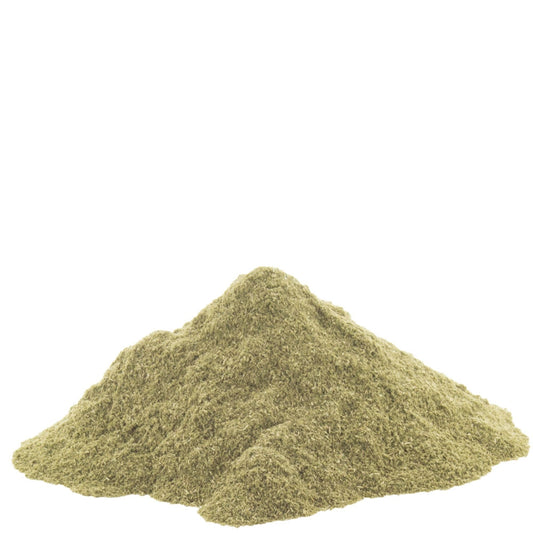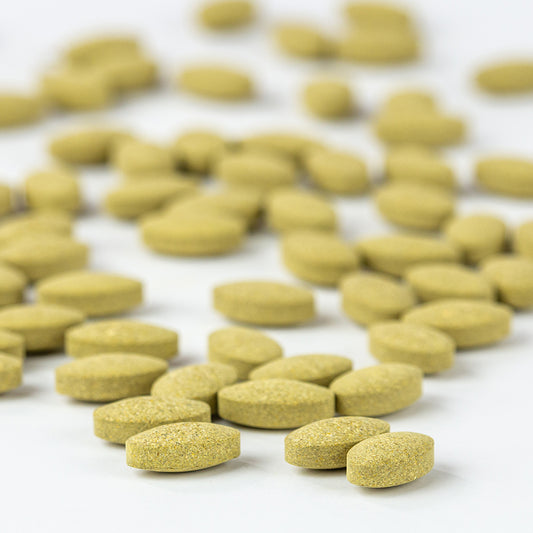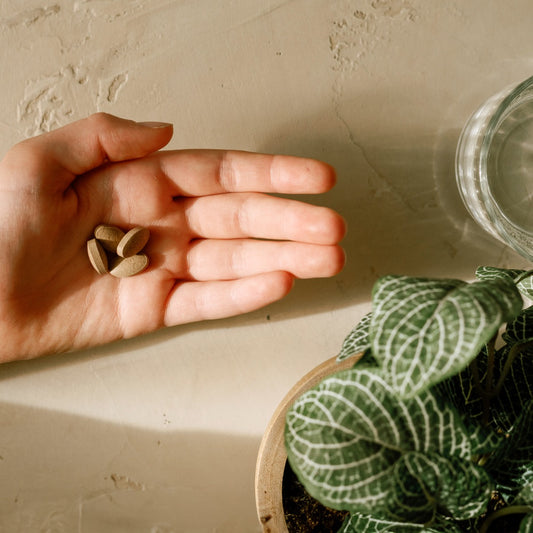While
teaches us many fundamentally simple ways to build a healthy immune system, life happens to all of us (and so do holiday parties, travel plans, and the end of another year…fast approaching!). Basic self-care may have taken the wayside, and this is where Ayurvedic herbs can lend a helping hand.
Kalmegh (also known as Andrographis paniculata) is one such ally that might be less well known than its immune-enhancing counterparts, like echinacea, elderberry, or osha root, but it is certainly no stranger in eastern herbalism. For thousands of years it has been used under many different names for many different healing effects.
Ancient Roots
Kalmegh's place in history is said to have started with the Kiratas people, a small tribe who lived in the forests of the Himalayan mountains. The earliest
sages named the plant accordingly, calling it kirata tikta, which means “the bitter herb of the Kirata people.”1 Kalmegh has received additional names since, and they have followed suit: bhunimba is Sanskrit for “neem of the earth,” referring to its bitter neem-like taste and effects,2 and its common name is “king of the bitters.” Do you see a pattern here? One taste of this herb and you'll understand why! Yes, kalmegh is extremely bitter. But a little bitterness, however unpleasant, can keep us in balance with innumerable health benefits.
Today, kalmegh is used all over the world. In addition to its importance in the Ayurvedic herbal pharmacopoeia, it is valued by Chinese medicine and renowned in the Scandinavian countries.3 The plant still grows natively in India, long after the Kirata tribes started working with it, and you can find volunteers of this annual shrub growing wild throughout the country. The plant itself has characteristic four-sided stalks and long, pointed leaves with pink to purplish flowers.4 Traditionally, the plant is wild harvested, but we cultivate our kalmegh using organic farming methods, ensuring protection of the soil, local ecosystem, and its many uses for years to come.

Kalmegh in the Body
So, what are all of these uses, and how does this herb affect our bodies and our health? It turns out kalmegh is helpful for more than just immune support. The dry and penetrating qualities of the herb help to cut through thick phlegm caused by increased
, and it also reduces
and kapha in the head and chest, helping to maintain a normal body temperature.5 Additionally, it supports a healthy respiratory tract, sinuses, and throat, and can even be used externally to help balance excess pitta in the skin.6Due to kalmegh's bitter and cooling qualities, it helps balance elevated pitta in the blood and stagnant pitta in the liver (
), enhancing liver function, and stimulating the production of bile.7And if all of that isn't enough, kalmegh can also burn and eliminate
, helping to kindle
, improve the appetite, and support comfortable digestion.8
With all of these applications, it's not hard to see why kalmegh is used to bolster all-around health and well-being.

Incorporating Kalmegh into Your Routine
Although the benefits of this bitter powerhouse herb are many, kalmegh has a tendency to provoke the light, dry, and rough qualities inherent to the
when used in excess.9 Luckily, Ayurveda has a plethora of balancing herbal allies to use in formulation with kalmegh to balance its effect and enhance its supportive actions. We've harnessed kalmegh's bitter and cooling aspects and added complementary herbal buddies to detoxify and rejuvenate the liver and gallbladder in our Liver Formula. Kalmegh can also be found in our Immune Strong formula (of course) which combines a dynamic blend of herbs to bolster the body's natural defenses all year round.
If powdered kalmegh sounds more like your style, we've got that too! As mentioned, make sure to balance those cool, bitter qualities with other more heating herbs if there are any signs of vata imbalance, or use the powder under the guidance of a practitioner. It's also important to note that kalmegh isn't recommended during pregnancy due to its vata-aggravating tendencies.
I don't know about you, but with all of these assets, kalmegh's bitter taste is starting to get a little sweeter! Whether you choose to use kalmegh on its own or in a formula, rest assured you've got an ally to help you maintain health during seasons and situations where immunity might be challenged.
1 Deepak Chopra, M.D. and David Simon, M.D. (2000). The Chopra Center: Herbal Handbook. Forty Natural Prescriptions for Perfect Health. New York, NY: Three Rivers Press. 70.
2 Pole, Sebastian. (2013). Ayurvedic Medicine: The Principles of Traditional Practice. London, England: Singing Dragon. 202.
7 Dass, Vishnu. (2013). Ayurvedic Herbology East & West: A practical Guide to Ayurvedic Herbal Medicine. Twin Lakes, WI: Lotus Press. 233.











